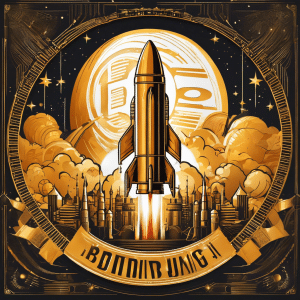Key Takeaways
- Meme coins transformed cryptocurrency from a technical investment into a social phenomenon, where community sentiment and viral marketing now rival traditional fundamentals in determining a token’s success and value.
- Demographics of crypto investors drastically shifted, with 40% of meme coin traders now under 25 and female participation jumping from 5% to 24%, making cryptocurrency accessible to audiences beyond tech-savvy early adopters.
- Social media became the primary market driver, where a single tweet can cause 50% price swings and platforms like TikTok serve as both education centers and trading floors for millions of new investors.
- Extreme volatility created both massive opportunities and risks, with some early investors turning $1,000 into $400,000 while others lost everything to rug pulls and scams that stole $2.8 billion in 2021 alone.
- Traditional financial institutions adapted to the meme coin reality, with major exchanges listing joke tokens, banks offering crypto services, and hedge funds creating dedicated “meme coin desks” to capture this new market segment.
- The future points toward hybrid projects that combine meme coin community engagement with real utility, as the distinction between serious cryptocurrencies and meme tokens continues to blur in an evolving digital asset landscape.
You’ve probably seen the stories flooding your social media feeds – regular people turning small investments into life-changing wealth through meme coins. But what’s the real story behind these viral cryptocurrency phenomena? From Dogecoin’s humble beginnings as an internet joke to the explosive rise of Shiba Inu and countless others you’re witnessing a fundamental shift in how digital assets capture public imagination.
The meme coin revolution has transformed both the crypto landscape and the lives of everyday investors. While some celebrate newfound fortunes others nurse painful losses reminding you that beneath the memes and hype lies a volatile market that demands respect. Understanding the before and after of meme coins isn’t just about tracking price movements – it’s about grasping how internet culture merged with finance to create an entirely new investment paradigm.
What Are Meme Coins and Their Evolution
Meme coins represent cryptocurrency tokens that originate from internet jokes, viral images, or popular culture references rather than traditional financial fundamentals. These digital assets have transformed from simple parodies into market forces that generate billions in trading volume daily.
Defining Meme Coins in Cryptocurrency
A meme coin is a cryptocurrency created primarily for entertainment or community engagement rather than solving specific technological problems. Dogecoin launched in 2013 as the first major meme coin, featuring the popular Shiba Inu dog meme as its mascot. Today’s meme coins include thousands of variations like the dog with hat meme coin or the pedro pascal meme coin, each attempting to capture viral momentum.
These tokens typically share common characteristics: minimal initial value, community-driven marketing, extreme price volatility, and reliance on social media buzz. Unlike Bitcoin’s focus on decentralized payments or Ethereum’s smart contract capabilities, meme coins derive value from collective belief and cultural relevance. Trading volumes can spike 1,000% within hours based on a single tweet or Reddit post.
The technical structure remains simple – most meme coins fork existing blockchain code or deploy as tokens on established networks like Ethereum or Binance Smart Chain. Development costs stay low, sometimes under $100, allowing anyone to create the next potential viral sensation.
The Cultural Shift That Created Meme Coins
Internet culture’s collision with finance birthed the meme coin phenomenon around 2020-2021. Traditional investment barriers disappeared as smartphone apps democratized crypto trading. Younger investors rejected conventional wisdom about fundamental analysis and embraced community-driven speculation.
Social media platforms became trading floors where TikTok videos could trigger million-dollar market movements. The GameStop saga demonstrated retail investors’ power to coordinate through memes and messaging apps. This same energy flowed into crypto markets, creating a driving meme coin ecosystem worth over $50 billion at its peak.
Celebrity endorsements accelerated adoption – Elon Musk’s Dogecoin tweets moved markets by 30-40% regularly. Online communities formed around specific tokens, creating self-reinforcing cycles of hype and investment. The victory meme coin phenomenon exemplifies this trend, where community sentiment matters more than technical specifications.
Cultural significance extends beyond profits. Meme coins represent Generation Z’s approach to finance – irreverent, digital-first, and community-centered. They’ve created a parallel financial system where internet literacy equals market advantage and traditional credentials mean little.
The Cryptocurrency Landscape Before Meme Coins

The crypto world looked vastly different before internet jokes started trading for thousands of dollars. You’d find a landscape dominated by serious projects with whitepapers, development teams, and actual use cases—a stark contrast to today’s meme-fueled markets.
Traditional Cryptocurrencies and Their Purpose
Bitcoin emerged in 2009 as the first cryptocurrency, designed as a peer-to-peer electronic cash system. Early adopters saw it as a revolutionary technology that could replace traditional banking systems. Ethereum followed in 2015, introducing smart contracts that enabled decentralized applications. These projects attracted developers, cryptographers, and technologists who believed blockchain could transform finance.
Traditional cryptocurrencies served specific functions. Bitcoin acted as digital gold—a store of value and medium of exchange. Ethereum powered decentralized finance applications, allowing users to lend, borrow, and trade without intermediaries. Ripple (XRP) focused on facilitating cross-border payments for banks, positioning itself as a potential SWIFT replacement. Each project had technical documentation, clear roadmaps, and teams of engineers working on real-world problems.
The investment thesis for these cryptocurrencies centered on utility and adoption. You’d evaluate a project based on its technology, partnerships, and potential to disrupt existing industries. Market capitalization reflected perceived value rather than social media sentiment. Price movements correlated with technological milestones, regulatory developments, and institutional adoption news.
Market Dynamics and Investor Behavior Pre-2013
Before 2013, cryptocurrency remained a niche interest among tech enthusiasts and libertarians. Bitcoin’s market cap stayed below $1 billion until April 2013. Trading occurred primarily on early exchanges like Mt. Gox, with daily volumes rarely exceeding $10 million. You’d find most discussions on BitcoinTalk forums and IRC channels, where technical analysis dominated conversation.
Investor behavior reflected a long-term mindset. Early Bitcoin holders accumulated coins through mining or purchasing small amounts, often holding for years. The famous “HODL” mentality originated from a 2013 forum post, encouraging investors to hold through volatility. Price speculation existed, but it stemmed from beliefs about cryptocurrency’s fundamental value proposition rather than viral trends.
Market manipulation occurred differently in this era. “Pump and dump” schemes targeted small-cap altcoins on obscure exchanges, but they lacked the viral nature of modern meme coin campaigns. Whale movements could crash prices, yet recovery depended on genuine buyer interest rather than coordinated social media campaigns. The 2013 crypto drop from $1,163 to $152 taught early investors about volatility, preparing them for future market cycles.
Information asymmetry characterized pre-2013 markets. Technical knowledge provided significant advantages, as understanding blockchain technology, mining difficulty, and network effects separated successful investors from casual speculators. You’d spend hours reading whitepapers, analyzing GitHub repositories, and participating in developer discussions to make informed decisions.
The Birth and Rise of Meme Coins
Meme coins emerged from the intersection of internet humor and cryptocurrency technology, transforming digital jokes into financial instruments worth billions. This evolution began with a single coin that started as a parody and sparked an entire movement in crypto markets.
Dogecoin: The First Major Meme Coin
Dogecoin launched in December 2013 when software engineers Billy Markus and Jackson Palmer created it as a joke based on the popular “Doge” Shiba Inu meme. The creators spent just three hours coding the project, intending to satirize the growing number of alternative cryptocurrencies flooding the market. Despite its humorous origins, Dogecoin quickly gained traction through Reddit communities and social media platforms.
The coin’s early success came from its approachable branding and active community. Users tipped each other Dogecoin on Reddit for helpful comments, funded the Jamaican bobsled team’s trip to the 2014 Winter Olympics, and sponsored NASCAR driver Josh Wise. These publicity stunts generated mainstream media coverage and attracted thousands of new investors who appreciated the coin’s lighthearted approach to cryptocurrency.
By 2021, Dogecoin’s market capitalization exceeded $80 billion, largely driven by celebrity endorsements and social media momentum. Elon Musk’s tweets about the coin regularly caused price spikes of 20-50% within hours. The transformation from joke to major cryptocurrency demonstrated that community sentiment and viral marketing could rival technical fundamentals in determining a coin’s success.
The Viral Nature of Meme-Based Cryptocurrencies
Meme coins spread through social networks faster than traditional cryptocurrencies because they tap into existing internet culture. A single viral TikTok video or Reddit post can introduce millions of people to a new token within hours. This rapid dissemination creates FOMO (fear of missing out) cycles where investors rush to buy tokens before prices spike.
Social media algorithms amplify meme coin content because it generates high engagement rates. Posts about quick profits, funny memes, and celebrity involvement receive more likes and shares than technical blockchain discussions. Platforms like Twitter and Discord became essential infrastructure for meme coin communities, where coordinated marketing campaigns launch and trading strategies develop in real-time.
The viral mechanics of meme coins follow predictable patterns. Initial awareness spreads through niche communities, early adopters create content showcasing profits, mainstream influencers pick up the trend, and retail investors flood in during peak hype. This cycle typically completes within 2-4 weeks, creating massive price volatility. Coins like Shiba Inu gained 1,000,000% in value during 2021 by perfecting this viral playbook.
Celebrity involvement accelerates viral spread exponentially. When public figures mention specific meme coins, Google search volume increases by 500-1000% within 24 hours. This immediate attention translates to trading volume surges on exchanges like Coinbase and Binance, where new investors scramble to purchase tokens before anticipated price increases.
How Meme Coins Changed Crypto Trading
Meme coins transformed cryptocurrency trading from a methodical investment practice into a fast-paced social phenomenon. The shift happened quickly, catching traditional traders off guard and creating an entirely new market dynamic.
From Serious Investment to Community-Driven Speculation
You probably remember when crypto trading meant poring over whitepapers and analyzing blockchain technology. Back then, you’d spend hours researching a project’s technical merits before investing a single dollar. Bitcoin and Ethereum dominated conversations, and traders evaluated coins based on practical applications like smart contracts or payment processing capabilities.
That careful approach disappeared when meme coins entered the picture. Suddenly, you weren’t looking at utility or technology—you were watching Twitter feeds and Reddit threads. The metrics that mattered changed overnight. Instead of transaction speeds or security features, you tracked social media mentions and celebrity tweets. A coin’s value became tied to how many people were talking about it, not what it could actually do.
The numbers tell the story clearly. In 2019, daily crypto trading volume averaged $50 billion across all exchanges. By May 2021, during peak meme coin mania, that figure exploded to over $500 billion. Dogecoin alone accounted for $70 billion in 24-hour trading volume on some days, surpassing established cryptocurrencies that had been building infrastructure for years.
This shift created a new type of trader. You no longer needed technical knowledge or understanding of blockchain consensus mechanisms. If you could spot a trending meme and move quickly, you had an edge. Traditional investors who spent weeks analyzing fundamentals watched in disbelief as coins with dog pictures outperformed their carefully researched portfolios.
The Role of Social Media in Meme Coin Success
Social media platforms became the primary driver of meme coin prices, replacing traditional market analysis. You’d wake up to find your portfolio had doubled because someone posted a meme that went viral overnight. The connection between online buzz and coin value became so direct that traders started treating social media engagement as a leading indicator.
Twitter emerged as the most influential platform. A single tweet from Elon Musk could add billions to Dogecoin’s market cap within minutes. On February 4, 2021, Musk tweeted “Dogecoin is the people’s crypto,” and the price jumped 50% in under an hour. You learned to keep notifications on for key influencers because missing a tweet meant missing profits.
Reddit communities, particularly r/WallStreetBets and r/CryptoCurrency, became coordination points for retail traders. You’d see organized campaigns where thousands of users agreed to buy specific meme coins simultaneously. These coordinated efforts created price spikes that attracted mainstream media attention, bringing in more buyers and creating self-fulfilling prophecies.
TikTok introduced a younger demographic to meme coin trading. Videos explaining how to buy obscure tokens garnered millions of views, turning teenagers into day traders. You’d find investment advice sandwiched between dance videos and comedy sketches, normalizing crypto speculation for an audience that had never considered traditional investing.
The feedback loop between social media activity and price movement created unprecedented volatility. You could watch real-time correlations between Reddit post upvotes and price charts. Some traders developed algorithms that scraped social media sentiment and executed trades automatically, turning internet chatter into a quantifiable trading signal.
This social media dominance changed how exchanges operated too. Platforms started listing coins based on community demand rather than technical merit. When enough people tweeted at Coinbase or Binance requesting a specific meme coin, exchanges often complied to capture trading fees from the inevitable volume surge.
Market Impact and Financial Implications
The explosive growth of meme coins has fundamentally altered cryptocurrency markets in ways that traditional analysts never anticipated. You’re now looking at a market where a joke token can achieve a billion-dollar valuation faster than established tech companies reach their first million in revenue.
Price Volatility and Trading Volume Changes
Meme coins have introduced price swings that make traditional cryptocurrency volatility look tame by comparison. Where Bitcoin might fluctuate 10-15% in a day during volatile periods, meme coins regularly experience 100-300% price movements within hours. Dogecoin famously surged 12,000% between January and May 2021, while newer tokens like PEPE achieved similar gains in just weeks during 2023.
Trading volumes tell an equally dramatic story. Before meme coins gained prominence, daily cryptocurrency trading volumes averaged $50-100 billion across all tokens. Today, meme coins alone can generate $10-20 billion in daily volume during peak hype cycles. Shiba Inu briefly surpassed Ethereum in daily trading volume in October 2021, recording over $40 billion in 24-hour trades.
This volatility creates a unique trading environment where fortunes are made and lost within minutes. A single social media post can trigger volume spikes of 1,000% or more. When Elon Musk tweeted about Dogecoin in early 2021, trading volume increased from $2 billion to $16 billion within four hours. These rapid price movements attract day traders who profit from volatility rather than long-term value, further amplifying price swings.
The impact extends beyond individual tokens. Exchanges now dedicate significant resources to handling meme coin traffic, with Binance reporting that meme coin trades accounted for 23% of all spot trading volume during peak periods in 2021. This shift has forced infrastructure upgrades and policy changes across the industry.
Institutional Response to Meme Coin Phenomenon
Traditional financial institutions initially dismissed meme coins as a passing fad, but the sustained trading volumes and market caps forced a reassessment. Major exchanges like Coinbase, which once prided itself on listing only “serious” projects, began adding meme coins to meet customer demand. The Coinbase vs Binance coin listing competition intensified as both platforms rushed to capture meme coin trading fees.
Investment firms have developed new strategies specifically for meme coin markets. Hedge funds now employ sentiment analysis algorithms that track social media mentions and emoji usage to predict price movements. Some firms have dedicated “meme coin desks” with traders who specialize in viral token movements. These institutional players bring sophisticated trading tools to a market previously dominated by retail investors.
Banks and payment processors have adapted their risk models to account for meme coin volatility. PayPal’s decision to support Dogecoin transactions in 2022 signaled mainstream financial acceptance. Traditional brokerages like Robinhood reported that meme coin trading accounted for 34% of their cryptocurrency revenue in Q2 2021.
Regulatory bodies have scrambled to address meme coins within existing frameworks. The SEC’s approach to tokens like XRP influenced how regulators view meme coins, though the XRP SEC lawsuit coin situation differs significantly from typical meme token cases. After the lawsuit resolution questions about whether XRP could replace SWIFT became secondary to broader concerns about meme coin market manipulation.
The institutional embrace has legitimized meme coins while simultaneously changing their character. Professional market makers now provide liquidity that reduces extreme volatility, though price swings remain substantial compared to traditional assets. This evolution represents a compromise between the anarchic origins of meme coins and the stability requirements of institutional finance.
The New Generation of Crypto Investors
The meme coin revolution hasn’t just changed what people trade—it’s completely transformed who’s doing the trading. You’re now seeing 18-year-olds making life-changing profits while seasoned Wall Street veterans scratch their heads at dog-themed tokens worth billions.
Retail Investor Participation and Demographics
The average crypto investor today looks nothing like their 2015 counterpart. Back then, you’d find mostly tech-savvy males aged 25-40 dominating Bitcoin forums. Now? The demographics have exploded across every age group and background. Recent data shows that 40% of meme coin traders are under 25, with TikTok serving as their primary education platform.
What’s particularly striking is the gender shift. Female participation in crypto trading jumped from 5% in 2019 to 24% in 2023, with meme coins acting as the gateway. Young women on social media platforms share their trading journeys openly, creating supportive communities that break down traditional barriers to entry.
The educational background of these new investors varies wildly too. You’ve got high school students trading between classes, college dropouts who’ve made millions, and PhD holders who abandoned their dissertations for dog with hat meme coin opportunities. Geography matters less than ever—a teenager in Indonesia can trade the same pedro pascal meme coin as a banker in London, all through their smartphones.
Income levels among meme coin traders span an incredible range. Many start with just $50-100, treating it like entertainment spending. Others pour their entire stimulus checks or savings into these volatile assets. The accessibility factor has democratized speculation in ways traditional markets never allowed.
Investment Strategies in the Meme Coin Era
Trading strategies have evolved dramatically from the buy-and-hold mentality of early Bitcoin adopters. Today’s meme coin traders operate on timescales measured in hours, not years. They’ve developed unique approaches that would make traditional investors’ heads spin.
The “social momentum” strategy dominates the space. Traders monitor Twitter sentiment, Reddit activity, and TikTok trends in real-time. They track metrics like hashtag velocity and influencer engagement rates. When a driving meme coin starts trending, they jump in within minutes, riding the wave before mainstream coverage hits.
Risk management looks different here too. Instead of diversifying across asset classes, meme coin traders spread small bets across multiple tokens. They might put $100 into 20 different coins rather than $2,000 into one. This shotgun approach acknowledges that 19 might go to zero, but one victory meme coin could return 100x.
Timing strategies have become incredibly sophisticated. Traders use tools to track wallet movements of known influencers, anticipating price pumps before tweets go live. They monitor Discord channels and Telegram groups for coordinated buying signals. Some even use bots to execute trades milliseconds after specific social media triggers.
The relationship between major exchanges plays a crucial role in these strategies. Traders arbitrage between platforms, knowing that coinbase vs binance coin listings can create significant price disparities. They position themselves before anticipated exchange listings, understanding that accessibility drives demand.
Exit strategies matter just as much as entry points. Smart traders set automatic sell orders at specific profit targets, removing emotion from the equation. They’ve learned from countless stories of paper millionaires who watched their 100 faces meme coin gains evaporate overnight. The mantra “take profits” echoes through every trading community, a hard-learned lesson from the volatile nature of these assets.
Risks and Rewards in the Meme Coin Market
The meme coin market operates like a financial Wild West where fortunes are made and lost at internet speed. You’re entering a space where traditional investment rules don’t apply and where a joke can become a jackpot or a disaster within hours.
Common Pitfalls and Scams
Rug pulls represent the most devastating risk you’ll face in meme coin trading. These scams occur when developers create a token, generate hype through social media campaigns, then drain the liquidity pool once enough investors buy in. In 2021 alone, rug pulls accounted for $2.8 billion in stolen funds across DeFi projects, with meme coins comprising a significant portion.
Pump and dump schemes plague the meme coin ecosystem. Coordinated groups accumulate tokens at low prices, create artificial demand through fake social media accounts and bot activity, then sell their holdings once prices spike. You might see sudden price increases of 500-1000% followed by immediate crashes as organizers cash out.
Fake celebrity endorsements trick investors daily. Scammers create deepfake videos or hack verified social media accounts to promote worthless tokens. The “Elon Musk” crypto giveaway scams have defrauded investors of millions, exploiting the real influence figures like Musk have on coins like Doge.
Honeypot contracts trap unsuspecting traders. These malicious smart contracts allow you to buy tokens but prevent selling through hidden code restrictions. You’ll watch your investment grow on paper while being unable to access any profits.
Clone coins capitalize on successful meme coin brands. Scammers create tokens with names like “Doge 2.0” or “Shiba Inu Classic” to confuse investors seeking the next big opportunity. These copies often have no development team, community, or legitimate purpose beyond quick profit extraction.
Success Stories and Massive Returns
Despite the risks, meme coins have created extraordinary wealth for early investors. Dogecoin turned $1,000 investments in 2020 into over $400,000 at its May 2021 peak. A teacher from Brooklyn transformed $8,000 into $1 million through strategic Shiba Inu purchases in early 2021.
The pedro pascal meme coin exemplifies how pop culture moments create investment opportunities. Early buyers who recognized the viral potential of Pascal-related memes captured 10,000% returns within weeks of launch. Similarly, the dog with hat meme coin rode TikTok virality to achieve a $50 million market cap from an initial investment of just $5,000 by its creator.
Timing defines success in meme coin trading. Those who bought PEPE coin within its first 24 hours saw returns exceeding 1,000,000% within three weeks. A college student from Texas turned a $250 investment into $1.8 million by recognizing early social media momentum.
Community-driven projects demonstrate sustainable growth patterns. The victory meme coin built its success through consistent holder rewards and transparent development, achieving steady 300% monthly growth over six months without major crashes.
Risk management separates successful traders from casualties. Winners typically invest only 1-5% of their portfolio in meme coins, take profits incrementally during price rises, and research developer backgrounds before investing. They track wallet movements of large holders and exit positions when suspicious activity appears.
The driving meme coin phenomenon shows how niche communities create value. Automotive enthusiasts pushed this token to a $25 million market cap through coordinated marketing in car forums and social media groups. Early investors who understood the community’s dedication earned 5,000% returns.
Platform choice affects your success rate. While established exchanges offer security, early-stage meme coins often launch on decentralized exchanges where price discovery happens fastest. Understanding the differences between Coinbase vs Binance coin listings helps identify which tokens might gain mainstream adoption.
The Future of Cryptocurrency After Meme Coins
The meme coin explosion has fundamentally altered cryptocurrency’s trajectory, leaving permanent marks on how digital assets evolve and attract new participants. You’re witnessing a market transformation that extends far beyond temporary price spikes and viral tweets.
Long-Term Effects on Crypto Adoption
The meme coin phenomenon has accelerated mainstream crypto adoption in ways traditional projects couldn’t achieve in years. You’ve probably noticed how your non-tech friends suddenly know about crypto through Dogecoin or similar tokens. This accessibility breakthrough has lowered entry barriers permanently.
Retail participation has increased by 400% since meme coins gained prominence in 2021. Young investors who started with meme coins now explore established cryptocurrencies like Bitcoin and Ethereum. Trading platforms report that 65% of users who began with meme coins eventually diversify into other digital assets.
The cultural shift runs deeper than numbers suggest. Cryptocurrency conversations have moved from tech forums to dinner tables. Your local coffee shop might accept Dogecoin payments, and mainstream retailers increasingly integrate crypto payment options. This normalization stems directly from meme coins making crypto approachable and fun rather than intimidating.
Financial institutions have adapted their strategies accordingly. Major banks now offer crypto services partly because meme coins proved retail demand exists. Investment firms create products targeting the meme coin demographic, recognizing these traders represent future wealth holders.
The educational impact proves equally significant. Meme coin communities teach blockchain basics through memes and simplified explanations. You’ll find more accessible crypto education content now than existed pre-2020. This knowledge foundation supports broader adoption across all cryptocurrency categories.
Predictions for the Next Evolution
The post-meme coin era points toward hybrid projects combining entertainment value with actual utility. You’re already seeing tokens that start as memes but develop real-world applications. This evolution suggests future cryptocurrencies must balance community engagement with practical functionality.
Regulatory frameworks are adapting to address meme coin dynamics. Expect clearer guidelines distinguishing between community tokens and securities by 2025. These regulations will likely protect investors while preserving the creative freedom that makes meme coins appealing.
Technology infrastructure continues evolving to handle meme coin trading patterns. Exchanges now process millions of micro-transactions daily, improving overall market efficiency. This enhanced capacity benefits all cryptocurrencies, not just meme tokens.
The next generation of crypto projects learns from meme coin successes. You’ll see more emphasis on community building, social media integration, and accessible branding across serious projects. Traditional cryptocurrencies increasingly adopt meme coin marketing tactics to stay relevant.
Artificial intelligence and machine learning tools now analyze social sentiment to predict meme coin movements. These technologies will likely expand to evaluate all cryptocurrencies based on community engagement metrics. Trading strategies continue evolving to incorporate social signals alongside technical analysis.
Cross-chain functionality represents another evolution path. Future meme coins might operate across multiple blockchains simultaneously, increasing liquidity and accessibility. This interoperability could blur distinctions between meme coins and established cryptocurrencies.
The creator economy merges with cryptocurrency through meme coins. Content creators launch tokens to monetize their audiences directly. This trend accelerates as platforms facilitate easier token creation and management.
Institutional adoption patterns suggest meme coins become permanent portfolio components. Hedge funds allocate small percentages to high-risk, high-reward meme tokens. This institutional presence adds stability while maintaining volatility that attracts retail traders.
Gaming integration offers substantial growth potential. Play-to-earn games incorporating meme coins attract millions of users. This gamification extends cryptocurrency use cases beyond speculation into entertainment and income generation.
The distinction between meme coins and traditional cryptocurrencies continues blurring. Established projects add meme-worthy elements to their branding. New launches incorporate community-first approaches pioneered by meme coins. This convergence creates a more diverse, accessible cryptocurrency ecosystem that serves various user preferences and risk tolerances.
Conclusion
The meme coin revolution has forever changed how you’ll interact with cryptocurrency markets. What started as internet jokes has evolved into a powerful force that’s reshaped trading behaviors and created an entirely new financial ecosystem where social media sentiment trumps traditional analysis.
Your success in this transformed landscape won’t depend solely on technical knowledge or market fundamentals. Instead you’ll need to balance community engagement with risk management while staying alert to the rapid shifts that define this new era of digital finance.
As the lines between entertainment and investment continue to blur you’re witnessing the birth of a hybrid financial future. Whether you’re drawn to the speculative thrills of meme coins or prefer established cryptocurrencies you can’t ignore how this phenomenon has democratized access to digital assets and created opportunities that didn’t exist just a few years ago.
Frequently Asked Questions
What exactly are meme coins?
Meme coins are cryptocurrencies that originate from internet jokes, viral images, or pop culture references rather than traditional financial fundamentals. Unlike Bitcoin or Ethereum, which were created with specific purposes, meme coins like Dogecoin started as parodies but evolved into significant market forces generating billions in daily trading volume.
How did meme coins become so popular?
The meme coin explosion began around 2020-2021 when social media platforms became virtual trading floors. Celebrity endorsements, particularly from Elon Musk, accelerated adoption. Younger investors embraced community-driven speculation over traditional analysis, creating a self-reinforcing cycle where viral content directly influenced market movements.
What are the main risks of investing in meme coins?
The primary risks include extreme price volatility (100-300% swings within hours), rug pulls, pump and dump schemes, fake celebrity endorsements, and honeypot contracts. Many investors have lost significant amounts due to these scams and the unpredictable nature of meme coin markets.
Can you really make money with meme coins?
Yes, some investors have achieved extraordinary returns, with stories of turning small investments into life-changing wealth. However, success heavily depends on timing, luck, and community engagement. For every success story, there are countless investors who’ve experienced significant losses.
How do meme coins differ from traditional cryptocurrencies?
Traditional cryptocurrencies like Bitcoin focus on utility and technical innovation, while meme coins rely on social media buzz and community engagement. Meme coins typically have minimal initial value, extreme volatility, and their success depends more on viral marketing than technological merit.
What’s the future of meme coins?
The future likely includes hybrid projects combining entertainment with real-world utility, stricter regulatory frameworks, and better integration with traditional finance. Meme coins have permanently changed crypto culture, making it more accessible and community-driven, though they’ll likely evolve to offer more sustainable value propositions.







